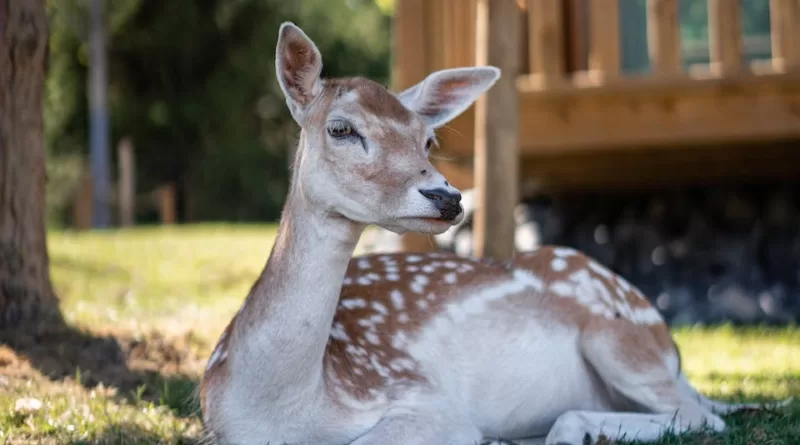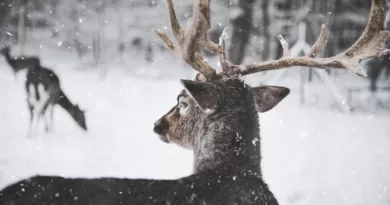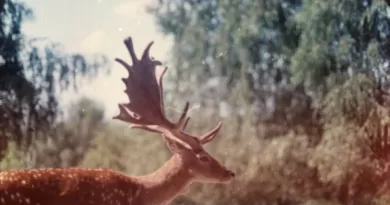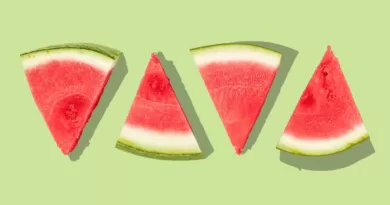What Do Deer Sound Like
Understanding Deer Vocalizations: A Guide to Their Sounds
Deer vocalizations play a crucial role in their communication and behavior. Understanding these sounds can provide valuable insight into their social interactions, reproductive patterns, and responses to potential threats. By deciphering the various vocalizations of deer, we can gain a deeper understanding of their needs, intentions, and emotions.
One of the most recognizable deer vocalizations is the snort. This distinctive sound is typically used as an alarm call, warning other deer in the area of potential danger. Whether it’s a perceived predator or a human presence, the snort serves as a clear signal for other deer to be on high alert. By paying attention to these warning snorts, we can gain insight into not only the presence of a potential threat but also the deer’s ability to communicate this information effectively to its herd.
The Language of Deer: Decoding Their Vocal Communication
Deer, while known for their grace and elegance, possess a rich vocal communication system that often goes unnoticed by human observers. Decoding the language of deer can provide valuable insights into their behavior, social dynamics, and emotional states. By paying close attention to their vocalizations, we can begin to unravel the intricate tapestry of their communicative abilities.
One of the most common vocalizations made by deer is the snort. This distinctive sound is a quick, forceful burst of air from their nostrils, often accompanied by a stomping of the hoof. While it may startle human onlookers, the snort serves as a warning signal among deer. Whether to alert others to the presence of a potential threat or to communicate aggression, the snort carries significance within deer communities. Decoding the exact meaning behind different variations of the snort can provide valuable information about the context and intent of the message being conveyed.
The Startling Snort: Unraveling the Meaning Behind This Distinctive Sound
The snort is a distinctive sound that deer make, often causing a sudden startle to both humans and other animals alike. It is a sharp, explosive sound that is made by the deer forcefully exhaling air through its nostrils. The snort is primarily used as a warning sign, alerting other deer in the vicinity of potential danger. This vocalization is often accompanied by a quick stamp of the hooves on the ground, reinforcing the urgency of the message. The snort is believed to communicate different levels of danger or threat, depending on its intensity and frequency. Observing the circumstances surrounding a deer’s snort can provide valuable insights into their behavior and the presence of predators or other disturbances in their environment.
Grunt Calls: Exploring the Various Types of Deer Grunts and Their Significance
Deer grunts are one of the most common and recognizable vocalizations in the animal kingdom. These low-pitched, guttural sounds are produced by male and female deer alike, and they can convey different meanings depending on the situation. Grunts can range from short, single notes to longer, rhythmic sequences, each carrying its own significance. They are often used as a form of communication between deer, and their meaning can vary from simple greetings to asserting dominance or warning of potential danger. Understanding the various types of deer grunts can provide valuable insights into their social dynamics and behavior.
One type of grunt commonly heard among deer is the contact call. This soft, rhythmic grunt is usually used by does to locate each other and keep track of their social group. It is often heard when they are separated, and serves as a way to maintain contact without drawing attention to themselves. Bulls also emit contact grunts, but their versions tend to be deeper and more forceful. These grunts are primarily used during the breeding season, when males are looking for females and asserting their dominance over rival males. By producing and responding to these grunts, deer are able to establish and maintain social bonds, ensuring the stability of their groups and maximizing their chances of survival.
The Doe’s Distress Call: Examining the Reasons and Implications of This Vocalization
The doe’s distress call is a crucial form of vocalization used by female deer when they feel threatened or scared. It is a high-pitched, loud sound that can travel long distances, alerting other deer in the vicinity of potential danger. This vocalization serves as a warning to the rest of the herd, allowing them to be on high alert and ready to flee if necessary. The reasons behind this distress call can vary, ranging from encountering a predator to sensing human presence. By emitting this vocalization, the doe not only seeks protection for herself but also actively ensures the safety of her fawn or other members of the herd.
Understanding the implications of the doe’s distress call is essential for both hunters and researchers. For hunters, it can be a useful indicator of deer presence in the area, as well as a sign that there may be a potential threat nearby. Researchers, on the other hand, can use the distress call to study the behavior and response of deer to different stimuli. By observing how deer react to distress calls in various situations, scientists can gain insights into their communication patterns and the impact of environmental factors on their vocalizations. Overall, the doe’s distress call serves as a vital tool for survival and communication in the deer world, allowing these graceful creatures to navigate their surroundings and protect their herd from harm.
Buck Vocalizations: Discovering the Different Calls and Roars of Male Deer
Male deer, also known as bucks, possess a diverse range of vocalizations that allow them to communicate with other deer and assert their dominance. One of the most well-known calls of a buck is the roar. This powerful vocalization is often associated with rutting season, when bucks compete for mates. The roar is a deep and resonant sound that can carry over long distances, serving as a display of strength and challenging other bucks in the area.
In addition to roars, bucks also produce a variety of other calls. One such call is the grunt, which is a shorter and more abrupt vocalization. Grunts can have different patterns and intensities, conveying different messages to other deer. Bucks may use grunts to communicate their presence, assert their dominance, or signal their readiness to mate. Understanding the different calls and roars of male deer provides valuable insights into their behavior and social dynamics within the deer population.
The Doe’s Bleat: Analyzing the Soft Call of Female Deer and Its Purpose
Female deer, known as does, are capable of producing a soft vocalization known as a bleat. This distinctive sound is often compared to the sound of a goat or sheep. The bleat of a doe serves multiple purposes and can communicate different messages depending on the situation.
One of the main purposes of a doe’s bleat is to communicate with her fawns. When a doe bleats, it is usually a way for her to call her young ones or gather them together. This is especially important during times of danger or when the fawns have wandered off. The soft nature of the bleat helps to keep the communication discreet and allows the doe to locate her fawns without alerting potential predators. Additionally, the doe’s bleat can also be used to signal other deer in the area, such as a nearby buck, indicating that she is ready to mate.
Alarm Calls: Investigating the Warning Sounds That Deer Emit
In the animal kingdom, vocalizations are crucial for communication and survival. Deer, known for their keen senses and cautious nature, have developed various warning sounds to alert others of potential danger. These alarm calls serve as a crucial form of communication within the deer community, helping to ensure the safety of the herd.
One of the most common alarm calls emitted by deer is the snort. It is a sharp, short, and explosive sound that can be heard over long distances. When a deer senses a potential threat, it quickly inhales and exhales to create this distinctive sound. The purpose of the snort is to warn other deer of possible danger, signaling them to be on high alert and ready to flee if necessary. This vocalization not only helps to protect individual deer but also plays a key role in safeguarding the entire herd from predators.
• The snort is a sharp, short, and explosive sound emitted by deer.
• It can be heard over long distances, serving as an effective warning signal.
• Deer quickly inhale and exhale to create the distinctive snorting sound.
• The purpose of the snort is to alert other deer of potential danger.
• This vocalization helps to ensure the safety of both individual deer and the entire herd.
• The snort signals other deer to be on high alert and ready to flee if necessary.
Rutting Season Rumbles: Unveiling the Unique Sounds of Deer Mating Behavior
During the rutting season, male deer engage in a variety of unique vocalizations to communicate with potential mates and establish dominance. One of the most iconic sounds of deer mating behavior is the deep, resonant roar of the dominant buck. This powerful vocalization can be heard from a distance and serves as a warning to other males, asserting their dominance and declaring their territory. The roaring sound of a buck is deep and guttural, often carrying a sense of power and aggression, which can be intimidating to rivals and attractive to females.
In addition to the roaring calls, male deer also produce a series of grunts and clicks during the rutting season. These shorter, repetitive sounds are used to attract the attention of nearby does and communicate their interest in mating. By emitting a series of grunts, bucks can create a rhythm that is both alluring and distinctive. This vocalization acts as a sort of “come-hither” signal to the females, inviting them to approach and potentially engage in mating behavior. The grunts and clicks of bucks are essential in establishing their presence and reproductive fitness during the rutting season.
Non-Vocal Sounds: Exploring Other Ways Deer Communicate Without Using Their Voices
Deer are fascinating creatures known for their vocalizations, but they also communicate using non-vocal sounds. One common non-vocal sound that deer use to communicate is stomping their hooves on the ground. When a deer wants to alert others to potential danger, it will stomp its hooves rhythmically, creating a loud thud that echoes through the forest. This acts as a warning signal to other deer in the area, informing them of potential threats and allowing them to stay vigilant and prepared.
Another interesting non-vocal sound that deer make is through their antlers. During the mating season, male deer, or bucks, engage in intense competitions for dominance. One way they communicate their strength and assertiveness is by thrashing their antlers against vegetation, trees, or the ground. The loud cracking sound produced by this behavior not only serves as a visual display, but it also sends acoustic vibrations through the air, indicating the buck’s presence and dominance to other deer in the area. Through these non-vocal sounds, deer effectively convey important messages without uttering a single vocalization.
What are vocalizations?
Vocalizations refer to the sounds made by animals using their voices, such as calls, cries, or calls, to communicate with each other.
How do deer communicate using vocalizations?
Deer communicate using various vocalizations, including snorts, grunts, bleats, and roars, which have different meanings and purposes in their communication.
What is the significance of the snort sound made by deer?
The snort sound made by deer is a warning signal that alerts other deer of potential danger or a perceived threat in their surroundings.
What are grunt calls and why do deer make them?
Grunt calls are various types of vocalizations made by deer, including aggressive grunts and social grunts. They serve different purposes such as asserting dominance or attracting mates.
What is the distress call of a doe and why do they make it?
The distress call of a doe is a vocalization made when a female deer is in distress or feels threatened. It can signal other deer to be cautious and may attract nearby bucks for protection.
What are buck vocalizations and what do they mean?
Buck vocalizations are the various calls and roars made by male deer. They serve different purposes such as asserting dominance, challenging other males, or attracting females during mating season.
What is the doe’s bleat sound and why do female deer make it?
The doe’s bleat is a soft call made by female deer, which can have different variations and meanings. It is often used to communicate with fawns, attract bucks during mating season, or signal distress.
What are alarm calls in deer communication?
Alarm calls in deer communication are warning sounds made by deer to alert others of potential danger or the presence of predators. These calls can help the herd stay aware and flee if necessary.
What are rutting season rumbles in deer communication?
Rutting season rumbles are unique sounds made by deer during their mating season. These vocalizations can range from grunts to roars and serve to assert dominance, attract mates, or establish territory.
How do deer communicate without using their voices?
Besides vocalizations, deer also communicate using non-vocal sounds. These include foot stomping, antler rubbing, tail flicking, ear movements, and body postures, all of which convey different messages to other deer.




